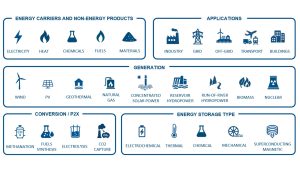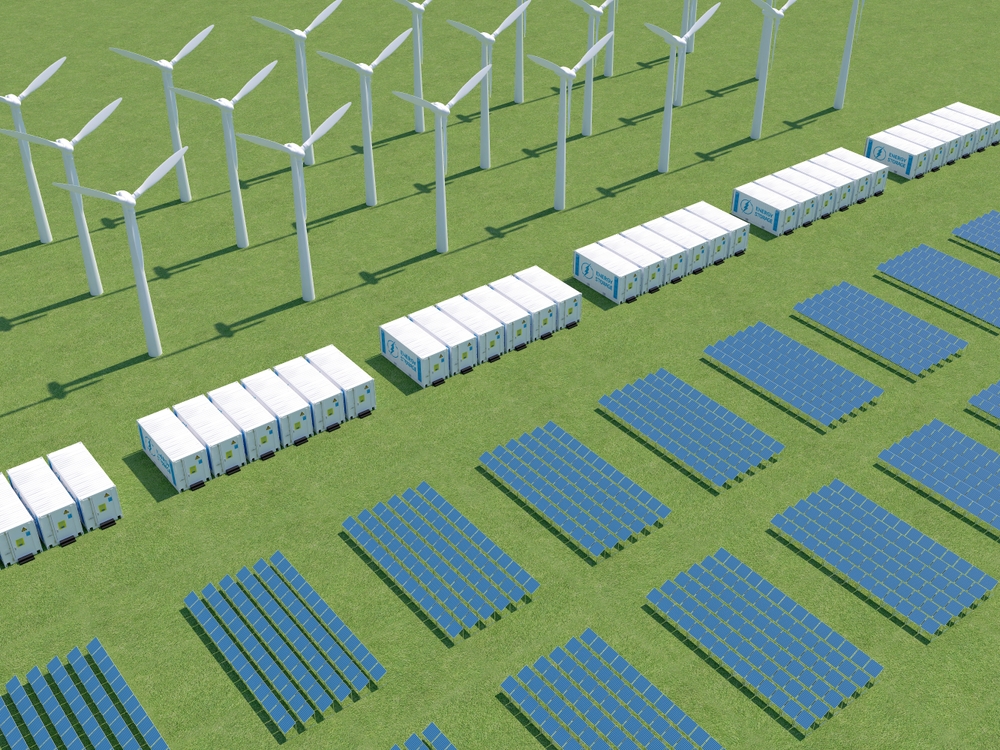Spyridon Pantelis, project manager for the European Energy Research Alliance, discusses the role of hybrid energy storage in meeting the complex storage needs of Europe.
Meet the complex requirements of energy transition
As Europe moves towards climate neutrality, energy storage is becoming an important factor in maintaining the stability and efficiency of energy systems.
However, traditional single-technology storage systems often fail to meet the range of functional requirements brought about by fluctuating renewable energy sources, distributed generation, and power systems with a high share of electrification.
Hybrid Energy Storage Systems (HESS) combine batteries with two or more storage technologies, such as supercapacitors, thermal storage, compressed air, hydrogen, or flywheels, to exploit complementary properties. These systems offer both short and long term services, allowing frequency adjustment, peak shaving, backup power and seasonal energy shifting. This functional flexibility makes Hess relevant configurations in increasingly complex energy system environments.
Multi-vector Future Single Systems

The potential of hybrid storage lies not only in its operational efficiency, but also in its role in promoting multi-vector energy systems. The ability to regulate electricity, heat and sustainable fuel within a single system supports new configurations in several application areas.
Industrial Energy Systems
Hybrid storage can increase process efficiency, reduce peak loads, and promote decarbonization through integration of thermochemical and electrochemical storage. Grid Services and Flexibility
By combining the technology with different response times and durations, Hess can address both short-term balance and medium-term energy shift requirements. Remote and Island Systems
In off-grid or weak grid environments, hybrid storage improves system autonomy and reliability when integrated with local renewable energy production. Electrovality and transportation
Hess can support differentiated charging requirements for a variety of transport modes. For example, the SuperCapacitor-Battery combination allows for fast charging, while hydrogen-based storage is suitable for long-distance or maritime applications. The built environment and local energy
In buildings and thermal networks, the combination of batteries and thermal storage allows for more effective load management and support demand-side flexibility.
Industrial development and policy alignment
Hybrid energy storage also presents industrial opportunities. As highlighted in Draghi’s report on European competitiveness, strengthening clean technology capabilities is essential to reduce external dependencies and support sustainable economic development.
Storage hybridization involves multiple industrial domains, ranging from material science and component manufacturing to system integration and digital control.
This cross-sectional nature is reflected in policy frameworks such as the Net Zero Industrial Act and Clean Industrial Transactions, which seek to promote the development of strategic technology and expand domestic manufacturing capacity.
Hybrid energy storage is consistent with these objectives by stimulating innovation and supporting the development of integrated value chains in areas where European industries are already active.
Energy security and system resilience
Increased integration of renewable energy into the grid results in structural volatility. By 2030, more than half of Europe’s electricity is expected to come from variable sources, which requires more flexible and distributed storage assets. This has both technical and strategic implications.
The 2025 blackout on the Iberian Peninsula highlighted the vulnerability of interconnected grids under high stress. Although a single solution cannot eliminate such risks, hybrid configurations can improve system robustness by providing layered flexibility and allowing faster response, longer storage duration, and more granular control of energy flow.
Hybridization also contributes to energy autonomy. By integrating second-life batteries, flow storage, or green hydrogen, the system can be designed to optimize the use of available resources, support sector binding, and reduce reliance on imported fossil fuels.
Remaining Issues and Policy Support
Despite the benefits of hybrid storage, some barriers remain. These include lack of standardization, limited data on actual performance across technology, and funding models that do not yet reflect the full system values of hybrid configurations. Technical challenges related to control systems, interoperability, and lifecycle management are also active areas of research.
Policy instruments are evolving to address some of these gaps. Recent initiatives such as market design reform, flexibility support schemes and permitting measures under the Net-Zero Industrial Act provide early signals that hybrid storage could be subject to improved investment terms. Continuous R&D efforts focusing on materials, digital control and system integration remain essential.
Research-based guidance supports the next steps
To support further deployment and coordination between sectors, the Stories Project has created two important resources:
A technology roadmap for energy storage hybridization that outlines typology of technical challenges, integration strategies, and use cases. Strategic Research and Innovation Agenda (SRIA) identifying priority areas of R&D, enabling regulatory frameworks, and identifying funding mechanisms.
Both can be used to support policy makers, researchers, and industry stakeholders engaged in the development and implementation of hybrid energy storage systems.
Contributor
Ivan Matejak, European Energy Research Alliance
Stefano Passellini, Austrian Institute of Technology
Myriam E GilBardají, Kit/Coordinator for Eera Joint Program
Energy Storage
Roberto Scipioni, Sintef Energy Research/Coordinator
EERA Joint Program Energy Storage Subprogram
This article also appears in the special focus of European Energy Storage.
Source link

